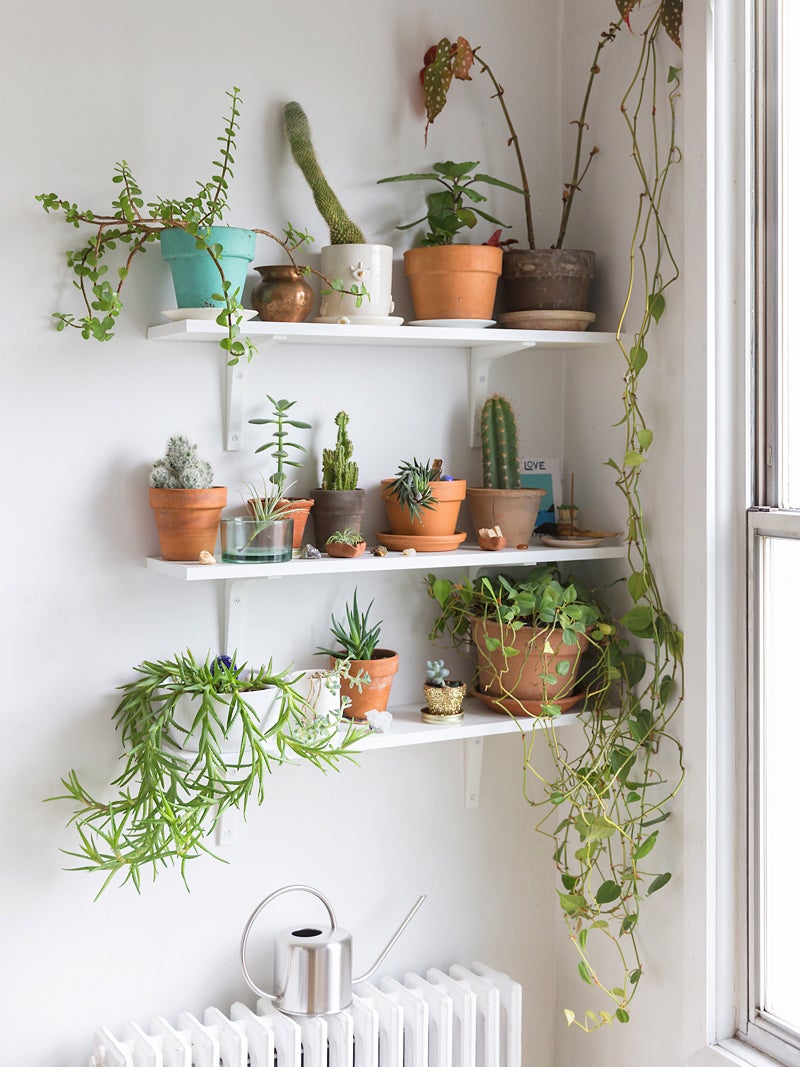How to Care for a Cactus—Without Getting Pricked
Desert plants aren’t always a no-brainer.
Updated Oct 11, 2018 4:23 PM
We may earn revenue from the products available on this page and participate in affiliate programs.
We’ve heard that cacti are among the easiest plants to keep alive—you barely have to water them, they said—so why do ours keep dying? Sure, they famously require way less H20 than tropical foliage. And apparently all they need is a sturdy pot and sunlight. Right?
Well, sort of—most cacti are beginner-friendly, low-effort plants, but a bit of extra knowledge will go a long way in making sure that your prickly new friend doesn’t just survive but thrives. “The best advice I can give is to anthropomorphize your plants,” says Christian Cummings of Los Angeles’s Cactus Store. “Talk to them. Grieve for them. Cheer them on. Using human tools like emotion helps us to empathize with green beings.”
We promise he has a few more practical tips, too. Here, he explains everything you’ve ever wanted to know about how to care for a cactus.
How much sun do they need?
According to Cummings, bright, filtered sunlight always reigns supreme for cacti—that means if you have sheer curtains or blinds, you’ll prevent your plants from getting a nasty sunburn, especially if you live in a hot, sunny climate.
If your home doesn’t get a ton of natural light, or you just want to make sure your cactus has ideal living conditions, grow lamps are a great option, but Cummings suggests setting one to a timer that’s synced up with local sunrise and sunset. “Too little full-spectrum light during the summer will make your plant grow funny and weaken it, and can even make it go artificially dormant,” he explains, “And too much full-spectrum light during winter will prevent it from going dormant and compromise its immune system by keeping it awake. Plants, like people, need rest.”
How much water do they need?
Timing is key when it comes to watering: Cummings explains that cacti don’t hydrate during the day, so you’ll want to give them a good drink once a week in the evening during spring and summer. And don’t worry about overdoing it, as long as you allow the plant to fully dry out between waterings. “They can handle more water than you think,” he says.
While your cactus might be all right if you miss a watering session or two, Cummings stresses that more cacti die from underwatering than overwatering—so don’t neglect it! In the fall and winter, however, you can cut back: Moistening the soil once a month is fine (and while you’re at it, make sure it doesn’t get too cold).
How can you tell if they’re underwatered or overwatered?
Your cactus should look nice and plump during growing season, according to Cummings—if it doesn’t, chances are it could use more water. In the winter, though, some weight loss (up to 30 percent) is normal.
Overwatering can result in two things: Your cactus might burst at the seams (a not-necessarily-fatal reaction that may heal over time, Cummings notes) or its roots might rot, especially if its soil is too dense. The latter, unfortunately, is hard to combat once it’s happened.
What kind of soil do they need?
Dense soil holds too much water, which can result in root rot, so Cummings recommends a well-draining mineral soil. And if you want your cactus to be as healthy as possible, fertilizer is great to use during growing season, too, which is why Cactus Store has made its own called Super Kabuto, which was inspired by a “legendary” fertilizer from a brand that’s since gone out of business.
What should you do with them in winter?
No greenhouse, no problem—Cummings explains that most cacti are fine with a mild winter, as long as their roots aren’t chilly. Any temperature above 40 degrees Fahrenheit should be just fine. But for equatorial species, like Melocactus, a higher temperature is better (above 60 degrees Fahrenheit).
Keeping up a once-a-month watering routine, even when the plant is dormant, is crucial: “If the root dries out, what often happens is your cactus will rot upon first water during spring because it has no roots to drink with,” Cummings says. See? Your home can feel like a desert oasis, no matter where you live.
See more stories like this: Buy These Under-the-Radar Plants Before They Hit It Big How to Care for a Monstera—Even If You’re Not a Plant Pro Is This the It Plant of 2020?
